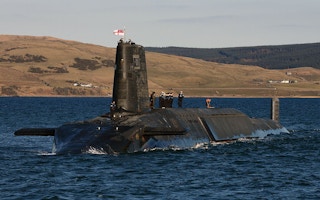Claims that a new generation of so-called advanced, safe and easier-to-build nuclear reactors − small nuclear power plants − will be vital to combat climate change are an illusion, and the idea should be abandoned, says a group of scientists.
Their report, “Advanced” is not always better, published by the US Union of Concerned Scientists (UCS), examines all the proposed new types of reactor under development in the US and fails to find any that could be developed in time to help deal with the urgent need to cut carbon emissions. The US government is spending $600 million on supporting these prototypes.
While the report goes into details only about the many designs of small and medium-sized reactors being developed by US companies, it is a serious blow to the worldwide nuclear industry because the technologies are all similar to those also being underwritten by taxpayers in Canada, the UK, Russia and China. This is a market the World Economic Forum claimed in January could be worth $300 billion by 2040.
Edwin Lyman, who wrote the report, and is the director of nuclear power safety in the UCS Climate and Energy Program, thinks the WEF estimate is extremely unlikely. He comments on nuclear power in general: “The technology has fundamental safety and security disadvantages compared with other low-carbon sources.
“Nuclear reactors and their associated facilities for fuel production and waste handling are vulnerable to catastrophic accidents and sabotage, and they can be misused to produce materials for nuclear weapons. The nuclear industry, policymakers, and regulators must address these shortcomings fully if the global use of nuclear power is to increase without posing unacceptable risks to public health, the environment and international peace and security.”
Cheaper options
Lyman says none of the new reactors appears to solve any of these problems. Also, he says, the industry’s claims that their designs could cost less, be built quickly, reduce the production of nuclear waste, use uranium more efficiently and reduce the risk of nuclear proliferation have yet to be proved. The developers have also yet to demonstrate that the new generation of reactors has improved safety features enabling them to shut down quickly in the event of attack or accident.
Lyman examines the idea that reactors can be placed near cities or industry so that the waste heat from their electricity generation can be used in district heating or for industrial processes.
He says there is no evidence that the public would be keen on the idea of having nuclear power stations planted in their neighbourhoods.
Another of the industry’s ideas for using the power of the new nuclear stations to produce “green hydrogen” for use in transport or back-up energy production is technically feasible, but it seems likely that renewable energies like wind and solar could produce the hydrogen far more cheaply, the report says.
In reality the nuclear industry is shrinking in international importance and is likely to continue to do so, Lyman says. According to the International Energy Agency, at the end of 2010, there were 441 operating nuclear power reactors worldwide, with a total electrical power capacity of 375 gigawatts of electricity (GWe).
At the end of 2019, there were 443 operating reactors − only two more than in 2010 − with a total generating capacity of 392 GWe. This represented a decrease of over 20 per cent in the share of global electricity demand met by nuclear energy compared with 2010.
Lyman says the US Department of Energy would be more sensible trying to address the outstanding safety, security and cost issues of existing light water reactors in the US, rather than attempting to commercialise new and unproven designs. If the idea is to tackle climate change, improving existing designs is a better bet.
The report notes that it is not just the US that is having trouble with nuclear technology: Europe is also suffering severe delays and cost overruns with new plants at Olkiluoto in Finland, Flamanville in France and Hinkley Point C in the UK.
Lyman’s comments might be of interest to the British government, which has just published its integrated review of defence and foreign policy.
Military link declared
In it the government linked the future of the civil and defence nuclear capabilities of the country, showing that a healthy civil sector was important for propping up the military. This is controversial because of the government’s decision announced in the same review to increase the number of nuclear warheads from 180 to 260, threatening an escalation of the international arms race.
Although Lyman does not mention it, there is a clear crossover between civil and nuclear industries in the US, the UK, China, Russia and France. This is made more obvious because of the few countries that have renounced nuclear weapons − for example only Germany, Italy and Spain have shown no interest in building any kind of nuclear station. This is simply because renewables are cheaper and produce low carbon power far more quickly.
But the link between civil and defence nuclear industries does explain why in the UK the government is spending £215m ($298m) on research and development into the civil use of the small medium reactors championed by a consortium headed by Rolls-Royce, which is also one of the country’s major defence contractors. Rolls-Royce wants to build 16 of these reactors in a factory and assemble them in various parts of the country. It is also looking to sell them into Europe to gain economies of scale.
Judging by the UCS analysis, this deployment of as yet unproven new nuclear technologies is unlikely to be in time to help the climate crisis – one of the claims that both the US and UK governments and Rolls-Royce itself are making.
This story was published with permission from Climate News Network.

















